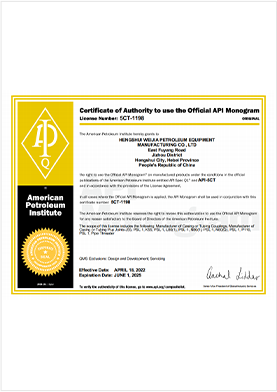- Afrikaans
- Albanian
- Amharic
- Arabic
- Armenian
- Azerbaijani
- Basque
- Belarusian
- Bengali
- Bosnian
- Bulgarian
- Catalan
- Cebuano
- Corsican
- Croatian
- Czech
- Danish
- Dutch
- English
- Esperanto
- Estonian
- Finnish
- French
- Frisian
- Galician
- Georgian
- German
- Greek
- Gujarati
- Haitian Creole
- hausa
- hawaiian
- Hebrew
- Hindi
- Miao
- Hungarian
- Icelandic
- igbo
- Indonesian
- irish
- Italian
- Japanese
- Javanese
- Kannada
- kazakh
- Khmer
- Rwandese
- Korean
- Kurdish
- Kyrgyz
- Lao
- Latin
- Latvian
- Lithuanian
- Luxembourgish
- Macedonian
- Malgashi
- Malay
- Malayalam
- Maltese
- Maori
- Marathi
- Mongolian
- Myanmar
- Nepali
- Norwegian
- Norwegian
- Occitan
- Pashto
- Persian
- Polish
- Portuguese
- Punjabi
- Romanian
- Russian
- Samoan
- Scottish Gaelic
- Serbian
- Sesotho
- Shona
- Sindhi
- Sinhala
- Slovak
- Slovenian
- Somali
- Spanish
- Sundanese
- Swahili
- Swedish
- Tagalog
- Tajik
- Tamil
- Tatar
- Telugu
- Thai
- Turkish
- Turkmen
- Ukrainian
- Urdu
- Uighur
- Uzbek
- Vietnamese
- Welsh
- Bantu
- Yiddish
- Yoruba
- Zulu
Casing Pup Joint Essentials for Oil and Gas Pipe Connections and Applications
Understanding Casing Pup Joints An Essential Component in Oil and Gas Drilling
In the oil and gas industry, casing pup joints play a vital role in the drilling process, serving as essential components that enhance the integrity and efficiency of well construction. This article discusses what casing pup joints are, their functionality, and their importance in drilling operations.
What Are Casing Pup Joints?
Casing pup joints are short lengths of pipe, typically ranging from 2 to 10 feet, that are used to connect sections of casing or tubing in a well. They are manufactured from high-quality steel and closed on both ends, allowing for the safe transmission of fluids and the maintenance of well pressure. The term pup joint derives from the appearance of these joints, which are shorter than standard casing pipes, much like the smaller size of a puppy compared to an adult dog.
Functionality of Casing Pup Joints
The primary function of casing pup joints is to facilitate the connection between different casing sections during the drilling process. They are used to make up for short distances or to adjust for any discrepancies in length, ensuring that each casing string fits properly within the wellbore. This is crucial because any gaps or misalignments could lead to potential well integrity issues, such as fluid leaks, pressure loss, or even catastrophic failures.
Moreover, casing pup joints provide flexibility in well designs and configurations. Drilling engineers can customize the length and configuration of casing strings as needed, allowing for more precise management of the well’s hydraulic profile. This adaptability is particularly useful in complex wells that require unique specifications due to variations in geology, pressure, or the presence of water-bearing strata.
Importance of Casing Pup Joints in Drilling Operations
casing pup joint

Casing pup joints contribute significantly to the overall safety and efficiency of drilling operations. Here are several key reasons why they are indispensable
1. Well Integrity Proper use of pup joints minimizes the risk of well failures. Ensuring that casing strings are secure and properly aligned helps prevent issues related to wellbore collapse or casing breaches.
2. Pressure Maintenance Casing pup joints assist in maintaining the desired pressure within the well. They act as a barrier to prevent the unwanted influx of fluids or gases from surrounding formations, thus reducing the risk of blowouts.
3. Cost-Effectiveness By using pup joints to connect casing sections, operators can save time and cost associated with overly long casing pipes or inefficient drilling practices. This helps streamline operations and can significantly reduce overall drilling costs.
4. Ease of Handling The shorter length of pup joints makes them easier to handle and transport compared to standard casing. This can improve workflow efficiency on the drilling site, reducing delays and enhancing safety.
5. Customization The availability of various lengths and specifications in pup joints allows drilling teams to effectively customize their drilling setup based on the specific geological and operational requirements.
Conclusion
Casing pup joints may be small in size, but their impact on the oil and gas drilling process is substantial. They embody a blend of safety, efficiency, and adaptability that enhances the overall performance of well construction operations. As drilling technologies continue to evolve and the search for hydrocarbons becomes increasingly complex, the role of casing pup joints will remain significant, underpinning the foundational integrity and functionality of modern drilling practices. In ensuring the proper implementation and management of these components, operators can achieve safer and more efficient drilling outcomes, ultimately contributing to the sustainability and effectiveness of the oil and gas industry.
-
Tubing Pup Joints: Essential Components for Oil and Gas OperationsNewsJul.10,2025
-
Pup Joints: Essential Components for Reliable Drilling OperationsNewsJul.10,2025
-
Pipe Couplings: Connecting Your World EfficientlyNewsJul.10,2025
-
Mastering Oilfield Operations with Quality Tubing and CasingNewsJul.10,2025
-
High-Quality Casing Couplings for Every NeedNewsJul.10,2025
-
Boost Your Drilling Efficiency with Premium Crossover Tools & Seating NipplesNewsJul.10,2025







